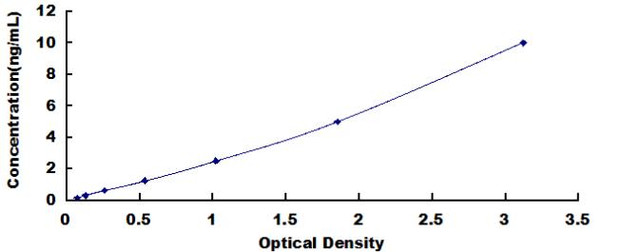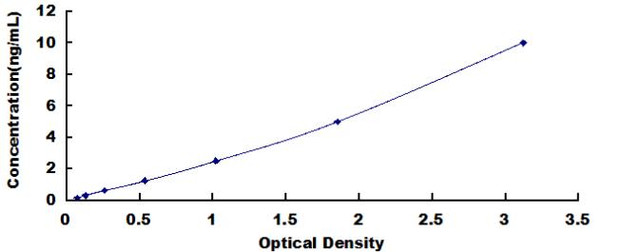Xeroderma pigmentosum: Causes, Inheritance, Treatment and Diagnosis
What is Xeroderma Pigmentosum?
Xeroderma pigmentosum (XP) also known De Sanctis-Cacchione syndrome is a rare genetic disorder that affects the skin, eyes and central nervous system. It is caused by a defect in the Xeroderma pigmentosum gene, which results in an inability to repair DNA damage caused by ultraviolet light. This can lead to a wide range of symptoms, including sunburns, freckles, skin cancer and neurological problems. XP is inherited in an autosomal recessive manner. Till date about 8 inherited forms of Xeroderma pigmentosum has been identified XP-A to XP-G. Diagnosis of Xeroderma pigmentosum can be difficult, as there is no single definitive test. A combination of tests can be used to help diagnose XP, including genetic testing, skin biopsy and assessment of sunlight sensitivity. Several support groups for xeroderma pigmentosum has been initiated which creates a community for XP patients and bring them together, also educate them in understanding the disease much better. Xeroderma pigmentosum Society, UK XP groups are few support groups for Xeroderma pigmentosum. The frequency of Xeroderma pigmentosum is 1 in 100,000 worldwide and 2nd most can be found in India 1 in 370, followed by Japan and USA.
Key Takeaways
- Xeroderma pigmentosum (XP) is a rare genetic disorder impairing DNA repair, causing extreme sun sensitivity, skin cancer, and neurological issues.
- Inherited autosomally recessive, it significantly reduces life expectancy.
Xeroderma Pigmentosum Gene and Nucleotide Excision Repair
In individuals without Xeroderma pigmentosa, the XP genes play a vital role in orchestrating the complex process of nucleotide excision repair. When UV light exposure leads to the formation of DNA lesions (such as thymine dimers or other distortions), the XP proteins step into action. These proteins work in a coordinated manner to recognize the damaged DNA sites, unwind the surrounding DNA strands, excise the damaged segment, and then accurately replace it with new DNA through synthesis.
The XP genes ensure that this repair process occurs with high precision, preventing the accumulation of mutations and maintaining the integrity of the genetic material. They collaborate with other proteins and enzymes to restore the DNA to its original state, thereby safeguarding the cells from potential harm caused by UV-induced damage. In individuals with Xeroderma pigmentosa, mutations in these XP genes impair the NER pathway, resulting in an inability to effectively repair UV-induced DNA damage. This deficiency leads to a heightened sensitivity to sunlight, skin abnormalities, and an increased risk of skin cancer.
Xeroderma Pigmentosum causes
XP is caused by a defect in the xeroderma pigmentosum gene, which results in an inability to repair DNA damage caused by ultraviolet light. Because of its extreme sensitivity to the sun, it has a highly significant risk of skin cancer. Genes that are involved in repairing damaged DNA cause the damages occured by UV radiation to be much more severe. The majority of ultraviolet (UV)-induced DNA damages are removed by the nucleotide excision repair (NER) pathway, which is crucial for the prevention of skin cancer. Xeroderma pigmentosum (XP) patients are extremely sensitive to UV radiation due to a genetic flaw in components of the NER cascade. The diagnosis for XP can be confirmed by the results of genetic testing, which is a lab test that identifies any genetic variations/mutations present in the gene and associate it with particular diseases. The average lifetime expectancy of a person with any form of XP and no neurological symptoms is 37 years.
Xeroderma Pigmentosum inheritance
XP is inherited in an autosomal recessive manner, meaning that both parents must carry the defective gene for a child to be affected. Autosomal means the gene is present on one of the numbered chromosomes in both males and females. The term recessive implies that both copies of the gene in question must be modified to develop the condition. A "carrier" is someone who has only one copy of the genetic abnormality. As a result, both parents are asymptomatic carriers for Xeroderma Pigmentosum but can transmit the mutated genes to future generations. When both parents are carriers of a recessive mutation in the same gene, there is a 25% chance that a child will inherit 2 mutations and be affected.
Xeroderma Pigmentosum Symptoms
Children with mutations in XP gene show symptoms from a very early age. Exposures to sunlight frequently induce dry skin (xeroderma) and variants in skin color (pigmentation). Symptoms of xeroderma pigmentosum can vary widely from person to person, but may include sunburns, freckles, skin cancer and neurological problems. Neurological problems may range from mild to severe which includes seizures, intellectual disability, progressive mental deterioration, hyporeflexia etc. By the age of ten, 50% of children with this condition might have developed skin cancer. According to researchers, persons with XP develop basal cell and squamous epithelial cell carcinoma, as well as cutaneous melanoma, on average 8 years old. During their lifetime, most people with Xeroderma pigmentosum will develop multiple skin malignancies. Eyes are very sensitive to light making it more susceptible to get damaged in XP. Conjunctivitis, cataract formation, and pterygium development are more frequently encountered. XP patients are more likely to develop eye cancer, tongue and mouth cancer, as well as other malignancy.
Xeroderma Pigmentosum Treatment
Yes, there are a number of treatments available to help manage the symptoms of xeroderma pigmentosum, but there's no proper cure. These include keeping the skin moist, sunscreen use, medications to protect the skin from ultraviolet light. Preimplantation genetic diagnosis (PGD) is a medical procedure done in conjunction with in-vitro fertilization (IVF). It might assist people who have a particular known genetic fault that cause their children to be at increased risk of developing Xeroderma pigmentosum. Eye and skin examinations should be conducted on a regular basis to ensure that the disease's development is monitored. UV protective suits with a complete-body design are available that reduce UV radiation to some degree. It is recommendable to use films with UV filters on your windows, and to get an estimate of the amount of UV radiation in your area. Severely affected patients with a particularly large number of new tumours may be given isoretinoin, which reduces skin tumours. The treatment of XP has elicited significant interest owing to its effectiveness in delaying or preventing the development of melanoma and non-melanoma skin cancers. PDT and full-face resurfacing, for example, have been considered as beneficial for the therapy of xeroderma.
Current clinical trials:
As nanoparticle mediated drug delivery is used for correcting genetically mutated genes, application of liposomal nanocarriers of the DNA repair T4 endonuclease 5 (T4N5) enzyme was considered. In both in vitro and animal tests, low-risk effects and high efficacy have been shown to minimize UV-induced photolesions, as well as other forms of skin damage. In comparison to the most popular XP therapies, this approach has been found to be highly successful with little negative side effects. To date, phase III studies have not yet successfully concluded, despite the fact that this technique has passed pre-clinical trials of phase I and II.
Related Kits

| Human Xeroderma Pigmentosum, Complementation Group G (XPG) ELISA Kit | |
|---|---|
| ELISA Type | Sandwich |
| Sensitivity | 0.042ng/mL |
| Range | 0.156-10ng/mL |

| Human Xeroderma Pigmentosum, Complementation Group D (XPD) ELISA Kit | |
|---|---|
| ELISA Type | Sandwich |
| Sensitivity | 0.056ng/mL |
| Range | 0.156-10ng/mL |

| Mouse Xeroderma Pigmentosum, Complementation Group C (XPC) ELISA Kit | |
|---|---|
| ELISA Type | Sandwich |
| Sensitivity | 0.061ng/mL |
| Range | 0.156-10ng/mL |
Recent Posts
-
Enavatuzumab: Revolutionizing Cancer Research Through Novel Therapeutics
Quick Facts About EnavatuzumabWhat is Enavatuzumab?Enavatuzumab is a monoclonal antibo …17th Dec 2025 -
Alemtuzumab: Mechanism, Applications, and Biosimilar Advancements
Quick Facts About AlemtuzumabWhat is Alemtuzumab?Alemtuzumab is a monoclonal antibody …17th Dec 2025 -
Validation of MycoGenie Rapid Mycoplasma Detection Kit - A highly sensitive visual determination method for Mycoplasma detection.
The MycoGenie Rapid Mycoplasma Detection Kit enables the detection of 28 Mycoplasma sp …3rd Mar 2025




